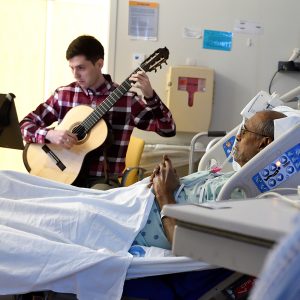
Academic Programming at Peabody
To always meet the highest standards of excellence, while continuing to chart new and innovative directions, securing Peabody’s leadership at the forefront of performing arts education now and in the future.
The Peabody Institute’s strategic plan outlines 25 goals across five key areas to be completed within five years. Read more about each strategic priority below.

To always meet the highest standards of excellence, while continuing to chart new and innovative directions, securing Peabody’s leadership at the forefront of performing arts education now and in the future.

To ensure access to a Peabody education for any student with the talent and tenacity to thrive unencumbered by financial limitations.

To ensure Peabody’s robust programmatic engagement beyond its Mount Vernon campus, across the university, in the community, throughout and beyond the region, and on the international stage.

To foster a culture at Peabody fully consistent with our core values of Learning, Impact, Respect, Innovation, Equity, and Entrepreneurship.

To cultivate an environment that meets the needs of a highly creative community and reflects Peabody’s deep tradition and forward-looking vision for the performing arts in the 21st century.